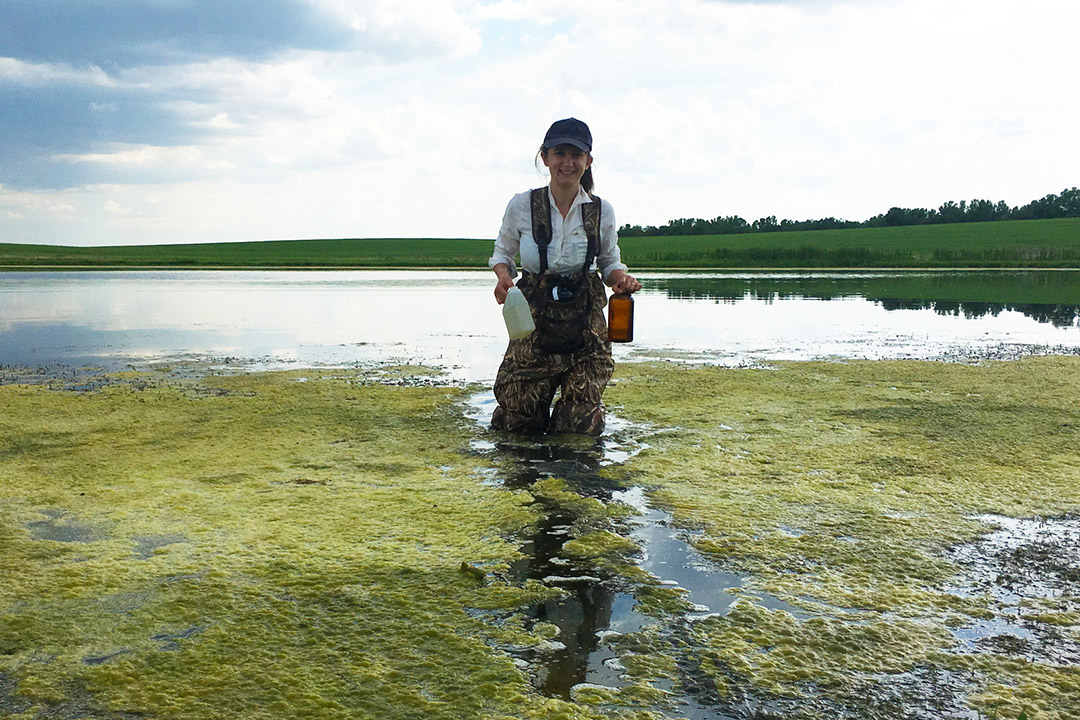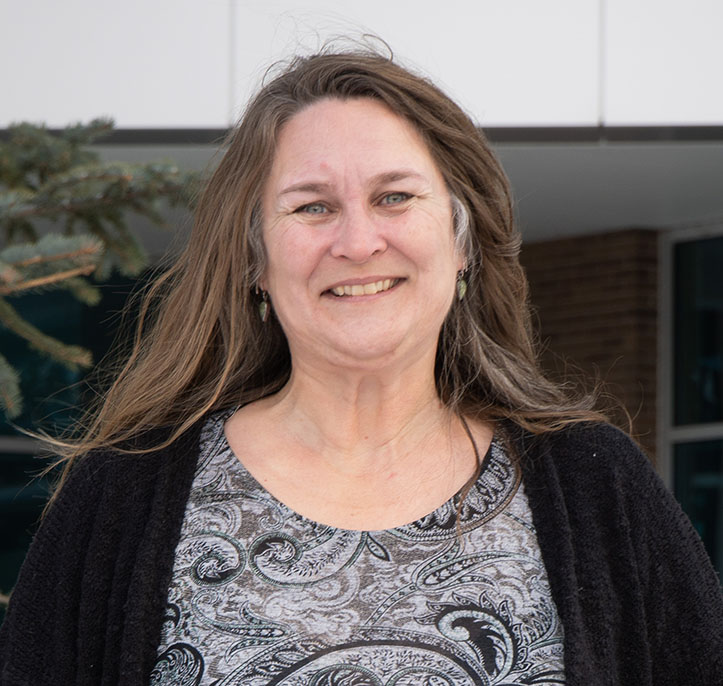
Closing gaps in water access to ‘leave no one behind’
Household chores can be a drain on anyone’s time and energy, but picture a scenario where your tap water needs to be boiled or treated before it can be used or consumed. Now compare the resulting hardship to yet another situation: where there is no water source in or close to your household.
By WESTERN SCHOOLS REPORT via Globe and MailBeyond the obvious implications, such as having less water for drinking, cooking and cleaning, and less time for other activities due to needing to fetch water, there are other consequences affecting the health and well-being of individuals, families, communities and society.
The extent to which gaps in water access can disrupt lives and livelihoods is the subject of inquiry for Gervin Ane Apatinga, researcher and PhD candidate, Department of Geography and Planning, University of Saskatchewan (USask).
“Without water, we cannot survive – and we cannot produce food. Across the world, there are many factors impacting water and food systems,” he says. “Looking at Ghana and other Sub-Saharan African countries, for example, can help us understand what people experience when they don’t have tap water in their homes.”
Limited water access has an outsized impact on vulnerable community members, and in countries with patriarchal gender norms, women and children often bear the brunt, explains Apatinga, who has examined various factors contributing to this vulnerability, including income, age and gender.

“Low-income households are more vulnerable, and when people have to walk longer distances to access water facilities, this brings implications for water quantity and quality,” he says. “Poor access to water has a number of nutritional and food security consequences. And in food-insecure households, women tend to go hungrier as they will offer food and water first to the men and then the children before they eat and drink.”
Corinne Schuster-Wallace, water-health researcher at Global Water Futures (GWF) at USask, sees this as “a vicious cycle, where women are not getting enough food and water, but at the same time, they have to work harder and expend more calories.”
The impact of issues like water and food security on exacerbating societal inequalities has been widely acknowledged – and is not limited to Africa, says Dr. Schuster-Wallace. “Drinking water insecurity is a reality for many living in First Nations communities in Canada. Also, water scarcity, particularly in drought situations, can lead to competition. In many places, we’re using the same water sources – whether that’s groundwater or surface water – for domestic uses as well as agriculture and energy.”
While water scarcity in Canada is certainly not at the level experienced in parts of Africa, there are several issues that are stressing water resources closer to home, she adds.
Pressures on water systems

Among the many pressures water systems face, three stand out for Dr. Schuster-Wallace. “The first relates to changes in land use, where we’re altering ecosystem services, the natural services that help to clean and capture our water,” she says. “Examples are the conversion of forests and wetlands.”
Other changes are the result of urbanization, which not only impacts the land cover – from natural ecosystems to highly impermeable surfaces – but brings additional challenges as high concentrations of people require water and wastewater services and food, she says. “Urbanization changes the water cycle and can create a heat island.”
The third factor is climate change, “which is altering our weather patterns and water cycle,” says Dr. Schuster-Wallace. A changing climate affects different places in different ways, but we are already seeing that precipitation falls as rain rather than snow, that snowpacks and glaciers – “our water-saving banks” – are diminishing, and that the incidence of adverse weather events like hailstorms, atmospheric rivers and droughts is on the rise.
Since challenges at the “food-water-energy nexus” are highly interconnected, she suggests that water security can be enhanced by climate-proofing agricultural and energy sectors.
Local measures, global impact
Research related to water security has a long history at USask, where a centre for hydrology was established in the 1960s to amplify the impact of high-calibre academic and government scientists in hydrology and related water sciences in Saskatoon.
Over the years, the goal – to advance science-based water management practices and enhance observational and modelling capability towards improved prediction of water resources – has only grown in importance, says USask vice-president, Research, Baljit Singh, and the scope of research and partnerships has expanded accordingly.
“We’ve built an outstanding research infrastructure that benefits from a cluster of schools and disciplines,” he says. “This environment, which is very collaborative by nature, enables us to lead discussions on finding solutions to some of the complex challenges humanity faces, climate change and water security among them.”
With an overarching mandate to address global water challenges, GWF, which is part of USask’s Global Institute for Water Security, is working to advance three goals. One, to improve disaster warning and develop forecasting capacity to evaluate the risk and severity of extreme events; two, to predict water futures through big data and improved numerical models that assess changes in human/natural land and water systems; and three, to inform adaptation to change and risk management through governance mechanisms, management strategies, and policy tools and guidance.
Leaders at GWF, including Dr. Schuster-Wallace and Dr. John Pomeroy, are engaged in national and international collaborations – and their combined voices have led to 2025 being designated the international year of glaciers’ preservation by the UN, says Dr. Singh. “Our glaciers are under threat from global warming, and we are losing some of our snowcaps. This requires urgent attention.”
Beyond advancing awareness and understanding in a global context, work at USask is focused on “finding ways to turn the knowledge which is being created into benefits for society,” he says, “for example by mobilizing public policy or new technologies like imaging, drones and computer models for sustainably growing Saskatchewan’s agri-food and resource sector as well as the population.”
Locally, adaptation measures for water security challenges can include “better management of demand and supply – as well as recognition of inherent water rights – to achieve a more sustainable and equitable approach to water use,” says Dr. Schuster-Wallace. “We also have to look at increasing efficiencies.”
Precision agriculture, for example, can help to protect water sources, since it reduces the runoff of agricultural inputs. Water conservation actions can reduce community water footprints as well.
However, there is increasing recognition that regional actions have to be considered in light of global consequences. For example, a high percentage of the greenhouse gas emissions driving climate change has originated with developed nations, yet the impact may disproportionally affect vulnerable populations, including the Ghanian women and girls who have to walk long distances to fetch water.
That’s why there needs to be a strong focus on the aim of the UN Sustainable Development Goals (SDGs), “to leave no one behind,” says Apatinga. “And this means we have to address water issues and other pressing problems in the world in a more equitable way. We have to take practical steps and implement policies that can help people gain access to water. We also have to hold agencies and governments accountable” for meeting goals.
The Intergovernmental Panel on Climate Change described “universal access to water, sanitation and hygiene as a no-regrets adaptation strategy,” says Dr. Schuster-Wallace, who believes efforts to advance SDG 6, which calls for clean water and sanitation for all, can help realize significant progress towards achieving other SDGs, including in areas like poverty reduction, health, gender equality, climate, nutrition and education.
“Research can help to predict the impacts of changing water on people, the environment and the economy,” she says, “and we know that evidence-based decision-making can support appropriate and sustainable water access and management solutions, which can lead to better outcomes in water quality and quantity, environmental conditions and society in general.”
Through insights gained at GWF, Apatinga and Dr. Schuster-Wallace hope to turn the problems arising from gaps in water access into potential, where better health for women, children and families can help create stronger and more sustainable communities around the world.

Together, we will undertake the research the world needs. We invite you to join by supporting critical research at USask.

